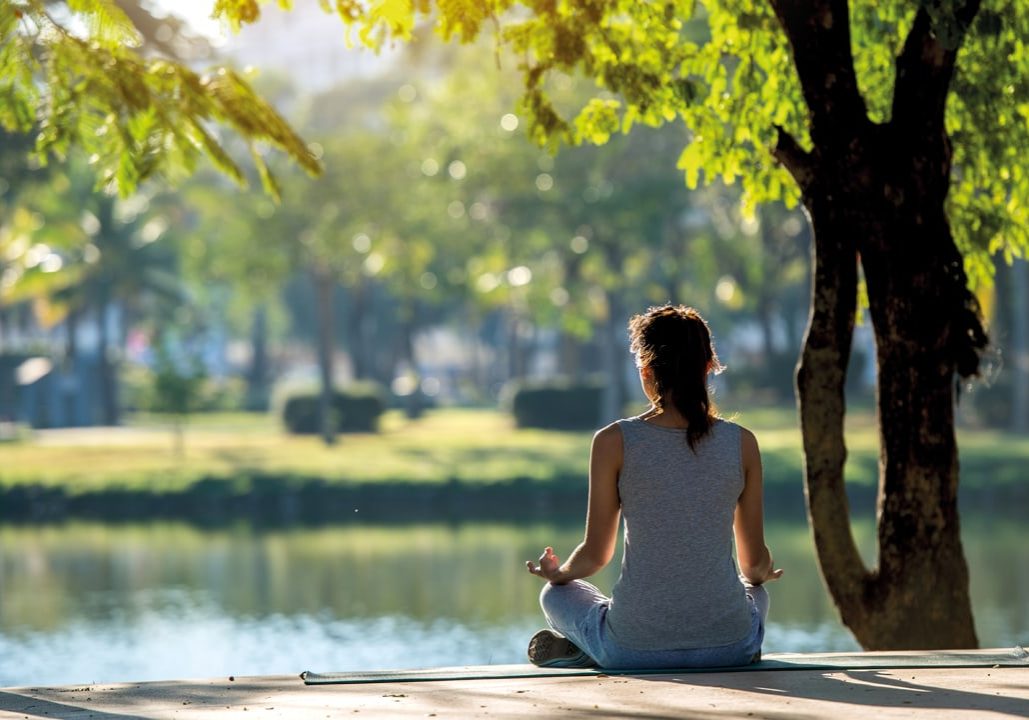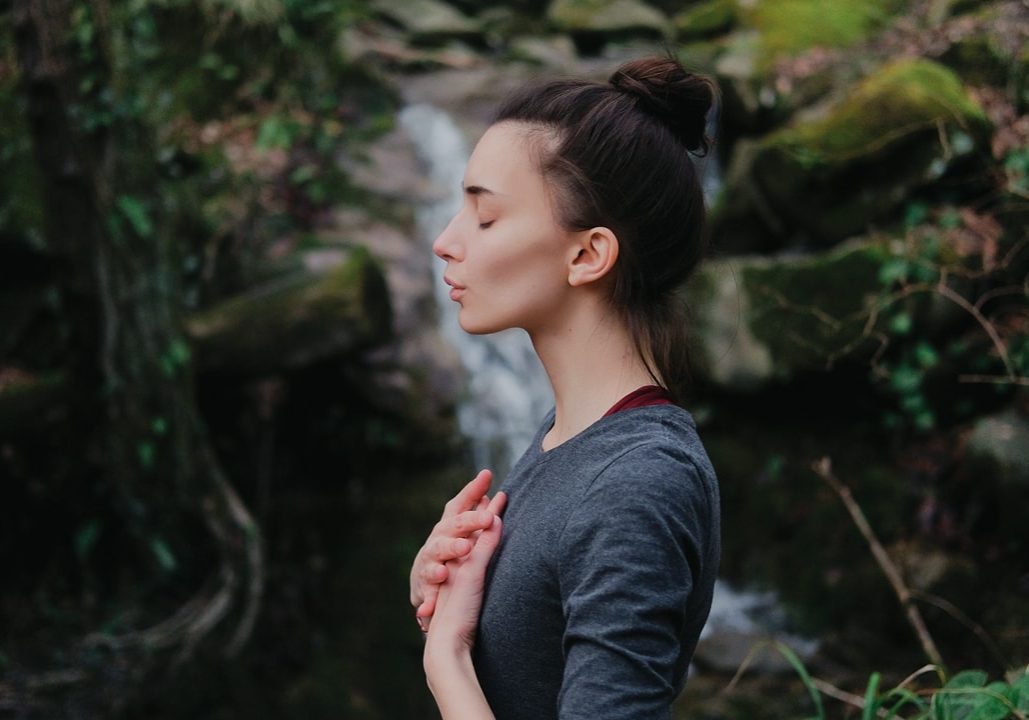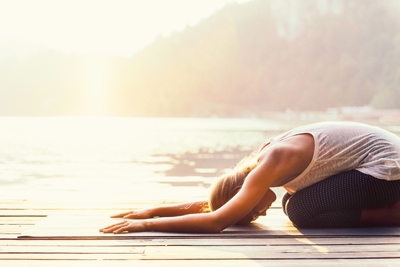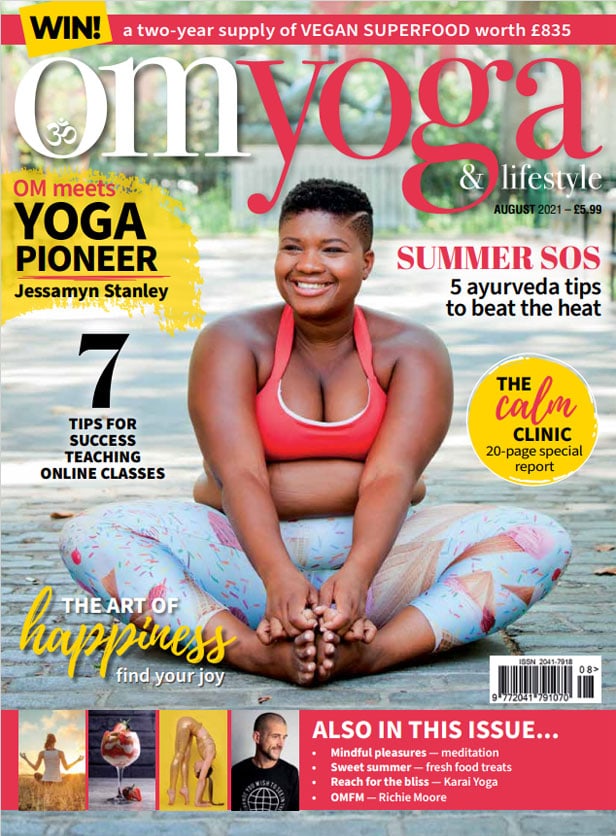
The joy of stillness
Yoga, meditation and a focused breathing practice can help us access the joy and stillness inherent within us all. By Hannah Campbell
Go back to yoga 5,000 years ago and what was it — a bunch of ‘seekers’ or yogis who hung out in caves? They took themselves away from all distraction, in an attempt to end all mental suffering and, ultimately, find happiness. I think that’s why many of us have our most profound experiences on retreat — in stillness, away from it all.
Many of us modern yogis are constantly on the move. Too busy Human ‘Doing’ that we’ve forgotten how to be our namesake, a Human ‘Being’. We search for happiness externally. We seek respite in the impermanent and fleeting nature of consumerism. We purchase that new car or schedule a holiday to make us happy. Then, as soon as we have it, the upgrade arrives and we feel that what we have is inadequate. It is a constant cycle of moving forwards or backwards without pausing long enough to realise that it is, in fact, in stillness that we find peace. No responsibility, no wanting, no doing, just being. Bliss.
Beneath the layers of our physical body, our thoughts, our experiences and our conditioning, lies real and unshakeable contentment. Philosophy teacher, Sudhir Rishi, always says ‘Smile is your birthright. Joy is your true nature’. If that is the case, we don’t have to search anywhere for joy, because we are joy.
Space and stillness
Yet how, in these busy and primarily externally-focused and stimulated lives we lead, do we connect back to that inherent sense of joy within?
The answer, my friend (as the yogis knew well before us), is in stillness. In stillness, we lift the veil of our many layers of physical being and connect to space — the very thing us modern yogis leave little time for.
The Sanskrit word ‘Chidakasha’ describes this space. The sweet space between the mental chatter, the moments of pure calm between each thought. The space of pure consciousness. It is in this space that we find joy and peace. As Deepak Chopra says: “In this moment, we lack nothing. All our needs are met.”
It sounds simple enough but with all our constant doing, most of us find it pretty uncomfortable to be still. For many of us, stillness is the hardest place to be. Luckily for us, our yogi friends did us all a favour and wrote down some very practical ways to connect to that sweet spaciousness that resides in stillness.
Most of us are familiar with the phrase: ‘But first, coffee’. Well, if we switch the word 'coffee’ for ‘breath’ we have what the yogis call Pranayama (or breathwork). It literally means ‘first breath’.

Think about it: as humans we can live for a few days without food, a few hours without water, but only a few minutes without breath. That gives us some indication of how important our breath really is. For thousands of years, people have been playing with the breath to help calm the mind.
A simple yet powerful technique that you can practice is to become aware of the space between breaths. The moment where the exhale ends and the inhale begins. The awareness of the breath is like a vehicle for the mind; we hop in and ride the inhale and the exhale, pausing in that delicious expansiveness that resides between breaths. In following the breath, we are taking our attention and our energy out of the mental chatter and into the physical body.
Yoga practice
As mentioned above, often it takes a retreat space for us modern yogis to really switch off. Mostly, this is because we associate holidays with chill time. But, of course, on retreat our asana (yoga movement) practice is largely responsible for that sense of calm and ease. Specific yoga practices have specific intentions and often potent responses in the body. Most notably, the humble forward fold is our best friend when we really want to turn in. The forward fold is a very therapeutic family of postures. Notice how next time you practice Uttanasana (standing forward fold) or Balasana (child’s pose) your mind naturally becomes calmer.
On retreat, we are taken away from most of the external stimuli that usually disperses our attention. The yogis call this Pratyahara, or sensory withdrawal. We can practice this through meditation; notably, mindfulness practices that require present moment, non-judgemental awareness of all sounds. Then, once we are aware of sound, we can deliberately disengage from the sounds and shift our awareness to a fixed point; for example, concentrating on the sensation of the breath at the top lip.
This nicely leads us on to the practice of Dharana (concentration). Think of this like a really soft, gentle application of effort to keep your mind trained on one thing.
This could be a mantra or it could be to remain focused on your breath. Naturally, you will find that with more and more practice, this effortlessly guides you into stillness.
As much as these written descriptions sound fairly easy, most of us tend to sit down and feel we can’t do it or wonder if we are doing it right. To this, I say treat your mind with curiosity and compassion. These two things are the antidote to anxiety.
The short pause
If the above advice sounds inaccessible for you without a guide, find a registered yoga teacher who can hold space for you whilst you learn how to hold space for yourself. Alongside these more ‘official’ yogic methods, we can all access that same happy place, free from worry and doubt, by taking short pauses throughout our day.
Think of memories when you felt truly joyful on the inside. Notice the feeling of joy in your body and bring those feelings to life again and again. Amplify your experiences of joy and bliss by sensing those emotions in your body and turning them up. Take leisurely walks, look at photos of good times and spend your days with those who warm your heart. Savour these moments.
As humans we have the power to shift our nervous system, to rewire our brain, and to soften the deep grooves of conditioning. All we have to do is remember how to pause and just be.
Hannah Campbell is a yoga, meditation and Pilates teacher and sports therapist. Find out more at: composureactive.co.uk





